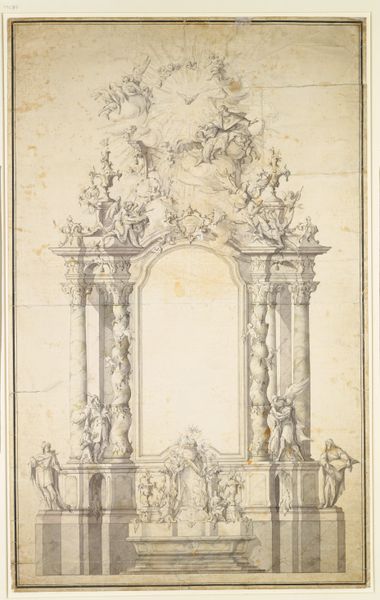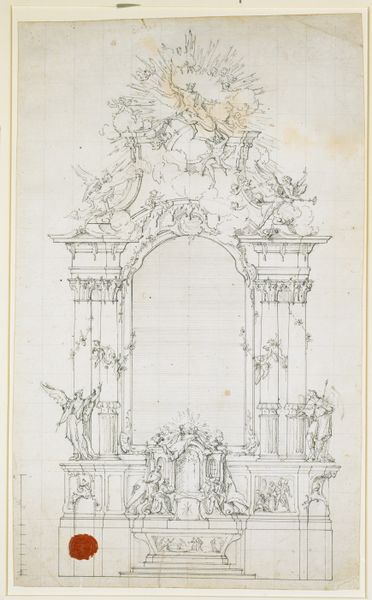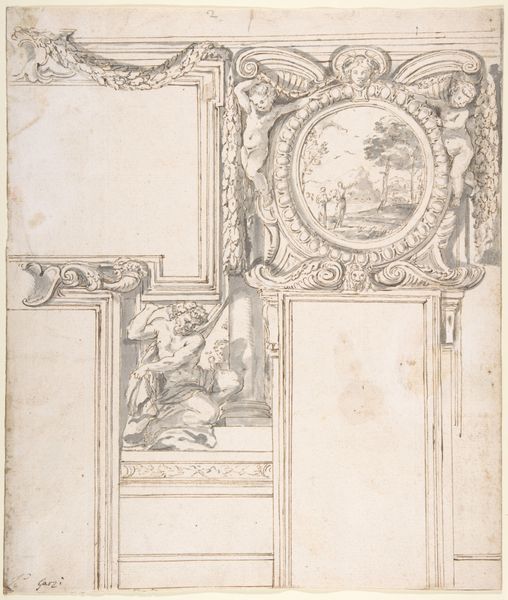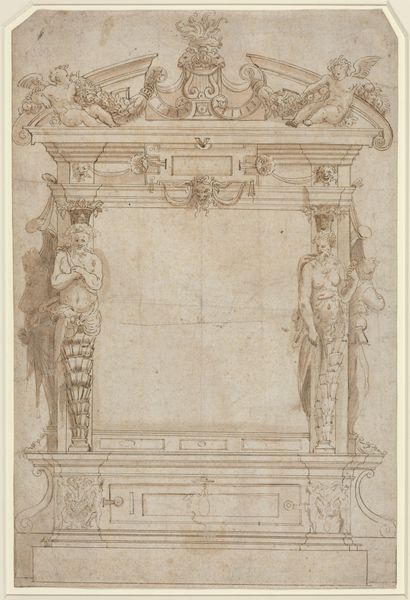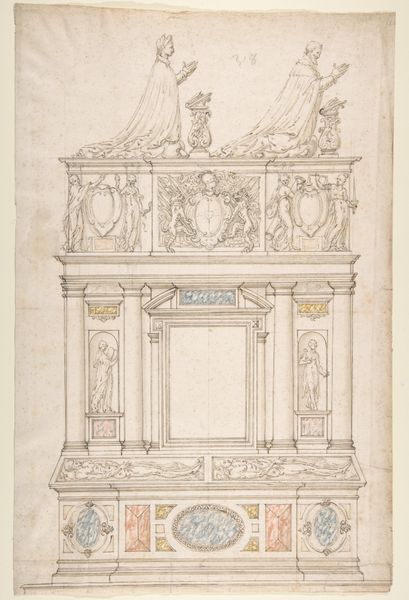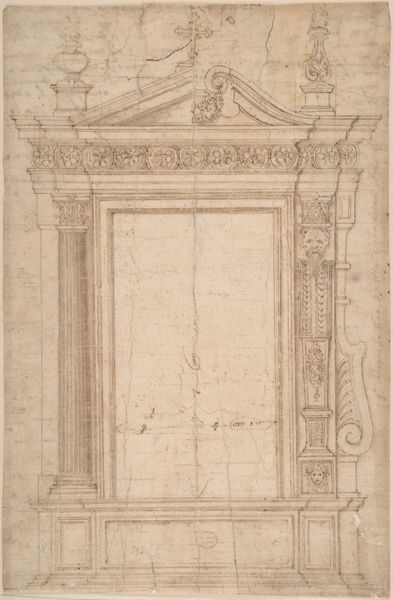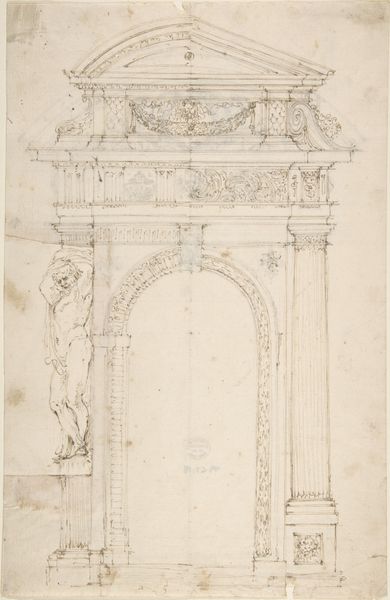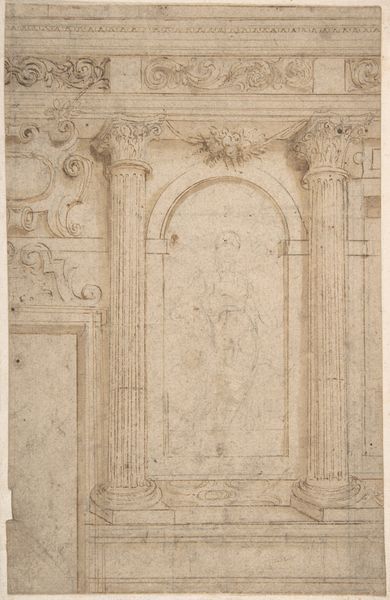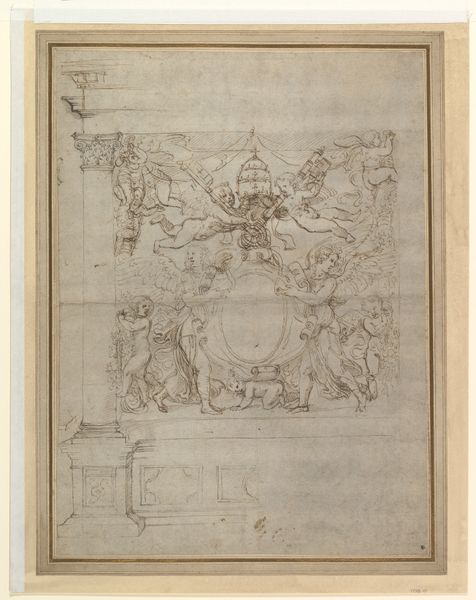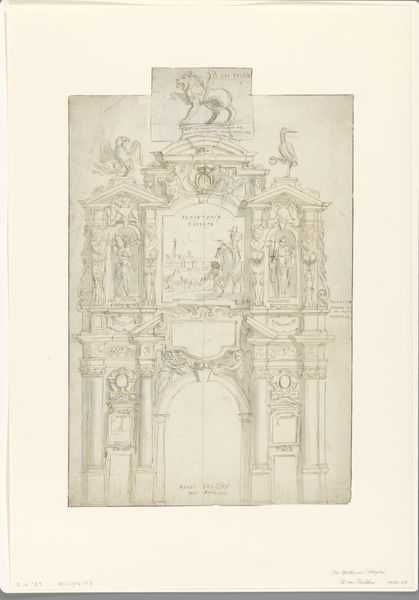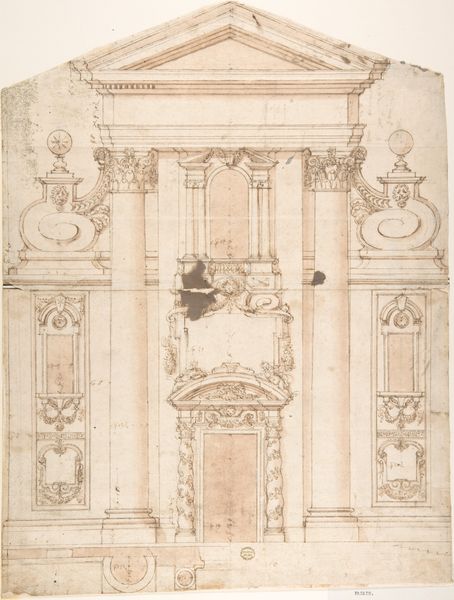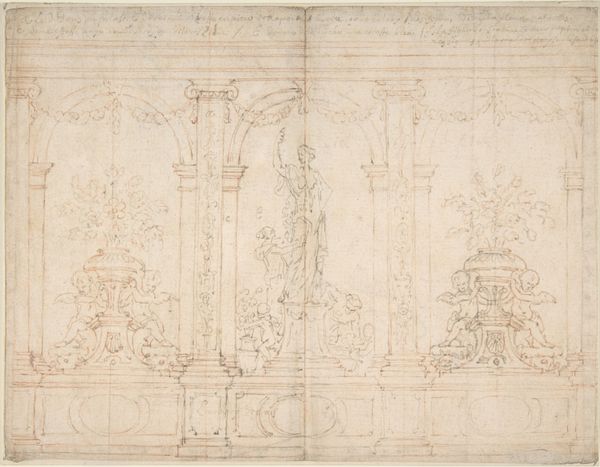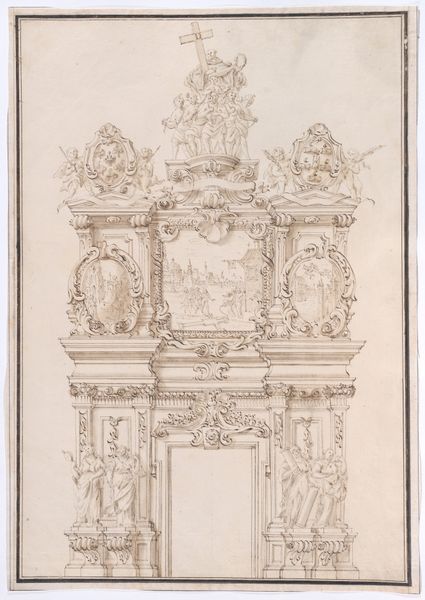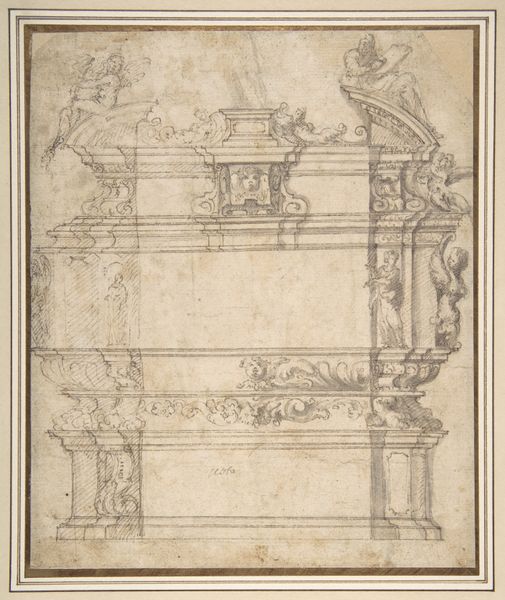
drawing, ink, pen, architecture
#
drawing
#
baroque
#
etching
#
ink
#
pen
#
architecture
#
rococo
Copyright: Public Domain
Editor: This ink and pen drawing, "Entwurf für einen Hochaltar," or "Design for a High Altar," created around 1750 by Johann Baptist Straub, feels incredibly ornate, even exuberant. It’s hard to imagine this delicate sketch becoming a massive altar. What symbols or historical context might be informing such a design? Curator: Look at the angels swirling at the top, bathed in divine light. Light is key here— the Baroque and Rococo periods loved the dramatic contrast between light and shadow, it's a visual metaphor for divine revelation, spiritual enlightenment, that’s still a very potent and universally-understood visual cue. Notice how this divine light radiates outwards. Editor: Yes, it's as though the light itself is a character in the piece. What about the architecture—those twisting columns and garland? They seem almost alive. Curator: Exactly. The architectural elements themselves are anthropomorphic—they possess almost human qualities, reflecting the belief that sacred spaces should resonate with our own human experience of being embodied. Also note how these details would be highlighted if transformed into the real three-dimensional structure through, for example, guilding. In essence, Baroque architecture aims to create a microcosm of the divine realm here on earth. Do you see any overt references to the Saints? Editor: There are some figures at the base… ah, yes, those could be saints in devotion. And what would have gone in the open central space of the altar? Curator: Possibly a painting or sculpture, a visual focal point narrating a key event or conveying core theological messaging that's designed for collective absorption during Mass. The altar isn't just a structure, it's a stage. Editor: A stage, indeed. It’s interesting how this sketch contains both theatrical drama and architectural precision. Now, I'm much more able to appreciate the depth of cultural meaning packed into its artistic symbolism. Curator: It is a captivating glimpse into how artistry, devotion, and cultural symbolism merged in the Rococo era.
Comments
No comments
Be the first to comment and join the conversation on the ultimate creative platform.
